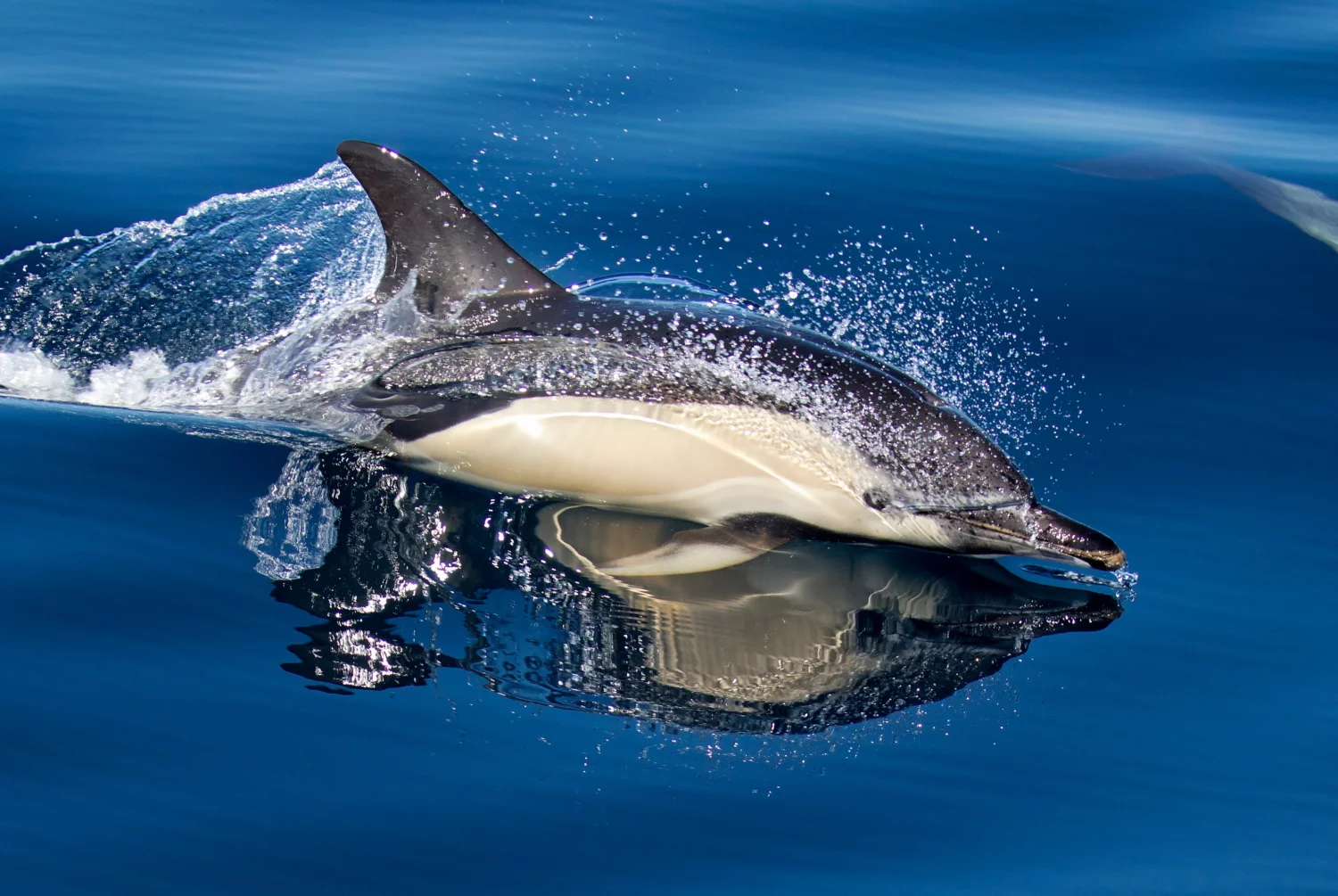Habitat Directive: Annex IV. MED Conservation Status: Unfavourable-Bad).
IUCN Red List: Least concern (LC), at global level. In the mediterrenean, it is ‘Endangered’ and it is declining.
Sighting possibilities
Widely distributed, the species prefers warm-temperate waters. There are populations that live mainly in pelagic waters and others that are more coastal, where they are more exposed to human activities. The species is historically present throughout the Mediterranean, but it has suffered a general decline over the last 40-50 years. The most abundancy density is registered in the Alboran Sea, the westernmost portion of the Mediterranean (between Spain and Marocco), in the Gulf of Corinth, in the northern and eastern portion of the Aegean Sea and along the coasts of Israel. In Italy, where it is no longer a common species, two sub-population (Ischia and Lampedusa islands) are registered with less than 250 species, while its sightings in the Ligurian-Provencal basin are quite rare.
How to recognise it at sea
Size: 1,5-2 meters of length, maximum weight of 1 quintal in adulthood.
It swims gracefully and quickly, given its tapered build. It is characterised by an ochre-yellow colouration of the flanks and a characteristic hourglass-like pattern on the sides. The dorsal fin is falcate, under which a dark grey-black triangle with a downward point is visible. In some areas of the Mediterranean, it is possible to sight it in mixed groups with striped dolphins, where the two species can be distinguished by the different colour on the flanks. Dives can last up to eight minutes, reaching depths of 250-280 metres. Highly intelligent and social, common dolphins often enjoy playing with each other, making large jumps, even taking advantage of waves generated by boats or large whales to swim with less effort. They are among the fastest cetaceans, capable of maintaining 40 km/h for short distances.
Biological notes
It is an odontocete cetacean belonging to the family Delphinidae. It has a varied diet, opportunistic, with a preference for pelagic fish (sardines, anchovies, etc..) and a daily requirement of 5-6 kg of food. Hunting is typically conducted in groups, together with other individuals of the same species, near the surface. Females reach sexual maturity at 6-7 years, males at 5-12 years. Mating takes place in summers, followed by a gestation of 11 months, with the birth of a young of 10 kg and 80 cm. Weaning is about 14-19 months, during which time the young learn to hunt and behave while observing adults. It is a gregarious animal that lives in groups of varying sizes depending on habitat and food availability: generally, coastal ones are the smallest, while the most numerous are typical of pelagic or escarpment areas, even reaching groups of several hundred individuals in some areas of the Mediterranean. The average lifespan of these marine mammals is 40 years.
Curiosities
- Common dolphins are extremely vocal and sometimes their squeaks and whistles can be heard from the water or through the hull of a boat. These whistles are thought to provide identification information similar to a name. It takes about 1 year for a baby to learn its characteristic whistle.
- They are very active and acrobatic, able to jump up to 3 metres out of the water.
- Cases of hybridisation between stenellas and common dolphins have been observed.





